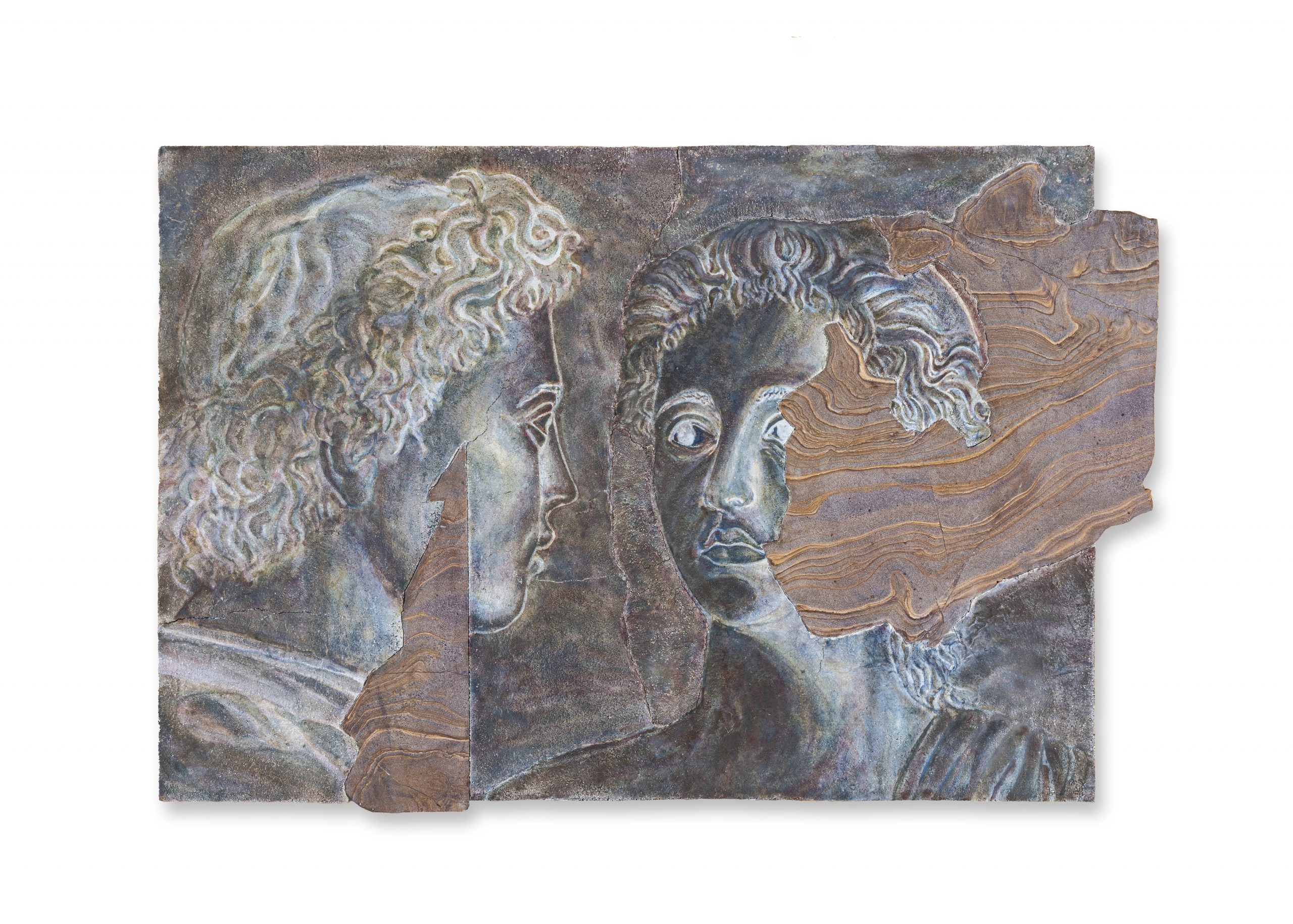
Every month, hundreds of galleries add newly available works by thousands of artists to the Artnet Gallery Network—and every week, we shine a spotlight on one artist or exhibition you should know. Check out what we have in store, and inquire for more with one simple click.
What You Need to Know: Now open at Alfonso Artiaco gallery in Naples, Italy, Anri Sala’s eponymous solo exhibition showcases a new series of locally-made, fresco-based works that explores the revelatory allure of the notoriously complex medium. The creation of frescoes requires a deep understanding of its technical nuances and processes. The works featured are demarcated by the time and days Sala made them, corresponding to when the individual work was begun and completed; specific to the fresco technique, they may only be painted when wet, and once dry, they cannot be reworked or revisited, making the distinction between when Sala began and when the work was dry of utmost importance. Compositing various supports and material additions, such as marble, the works evoke themes of excavation, as the layers reveal or obscure various parts of the compositions or underlying medium. As objects, unencumbered by architecture as frescoes so commonly are, they engage with ideas around artifacts, uncovered histories, and perceptions of time.
Why We Like It: Sala’s work invites viewers on a visual exploration and excavation. The work’s color palettes, medium, and composition initially read as artifacts from millennia past, but upon closer inspection, glimpses of more saturated color and the composition of material planes reveal a decidedly contemporary feel. Because part of the process involved in fresco painting is inherently predictive—the artist cannot fully know the end result until the work is dried—the result becomes a revelation to both artist and viewer. Within the white cube, these works operate within a juxtaposition of contexts; where frescoes and Classical figuration might be expected in a historic building, their adornment of the gallery space offers a fresh perspective—both of the medium and Sala’s creative line of inquiry. Ultimately, Sala’s solo show offers visitors a contemplative, archeology-inspired journey that investigates the nature of artistic creation.
According to the Gallery: “The fresco is often associated with an immovable work because it is made on the wall. The works in question, on the other hand, resemble detached frescoes, except for the support in panels of Aerolam, composite aluminum, which gives them a brilliant touch contrasting the porosity of the plaster. The regular breath of the frescoes in the quiet rooms of the gallery is pervaded by the arrival of a sound. An ancient breath of air moves indomitably. It carries the echo of the bodies that Vesuvius did not spare from Pompeii. The air passes through the voids of their casts in an incessant ‘circular breath.’ The sound of the aulos, a wind instrument used at the time, allows you to hear the passage of air. Anri Sala transforms an archaeological space into a present time: ‘(…) he sculpts the space of sound.’ The melody has now taken on a new form in a place, the gallery, acquiring an even different time because slow and patient: that of the fresco.”
See featured work from the exhibition below.
Anri Sala, Legenda Aurea Inversa (II, fragment 1) (2023). Courtesy of Alfonso Artiaco, Naples.
Anri Sala, Legenda Aurea Inversa (VI, fragment 1 i) (2023). Courtesy of Alfonso Artiaco, Naples.
Anri Sala, Legenda Aurea Inversa (VIII, fragment 1) (2023). Courtesy of Alfonso Artiaco, Naples.
Anri Sala, Surface to Air XI i, ii, iii (Tartaruga/Morning, Afternoon) (2023). Courtesy of Alfonso Artiaco, Naples.
Anri Sala, Surface to Air XV (Cipollino Venato Rosso/Afteroon Slightly After) (2023). Courtesy of Alfonso Artiaco, Naples.
“Anri Sala” is on view at Alfonso Artiaco, Naples, through November 4, 2023.